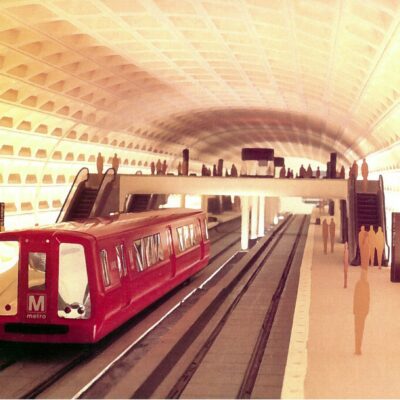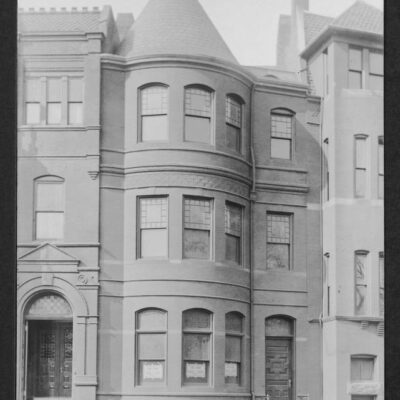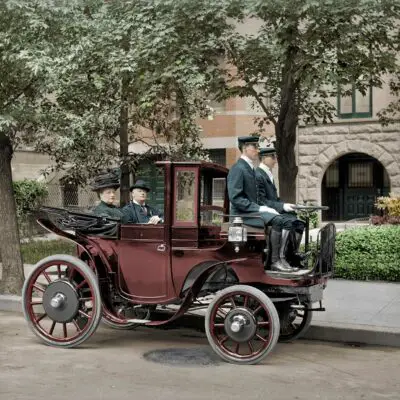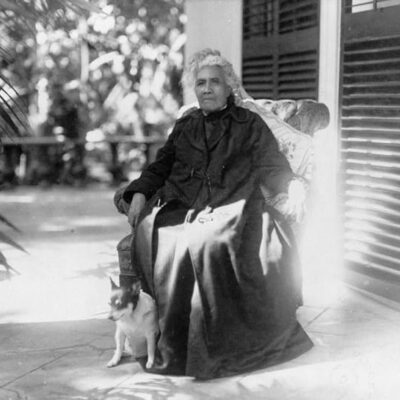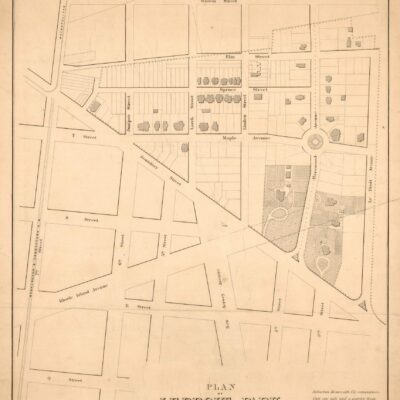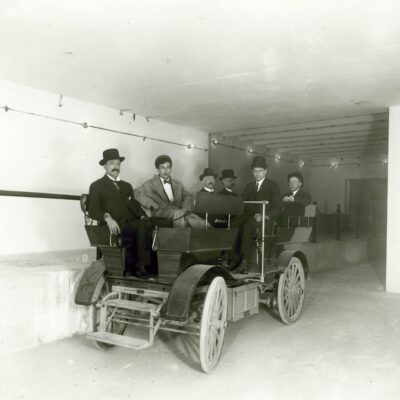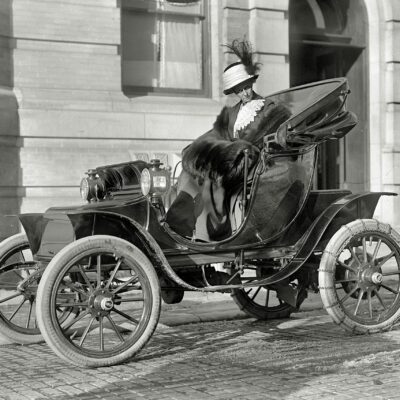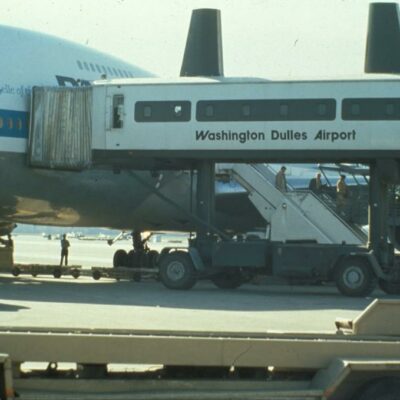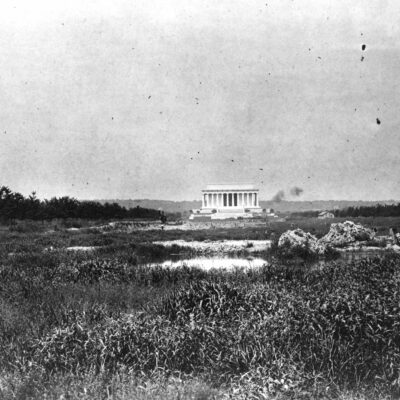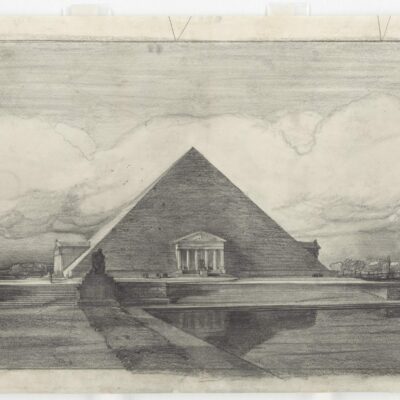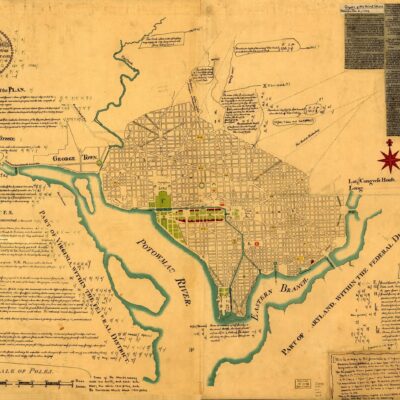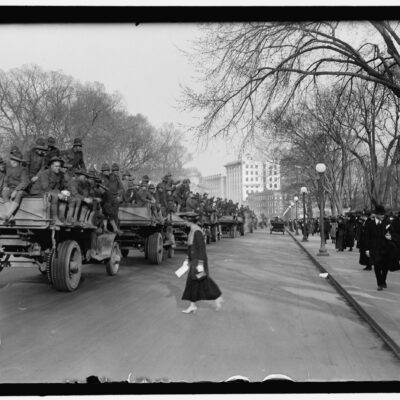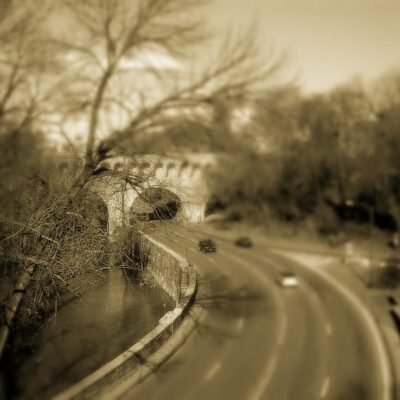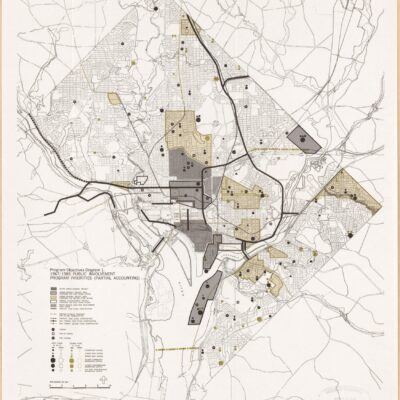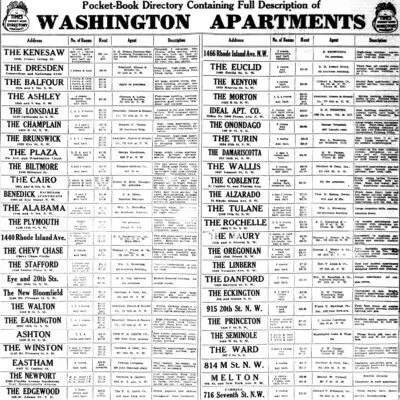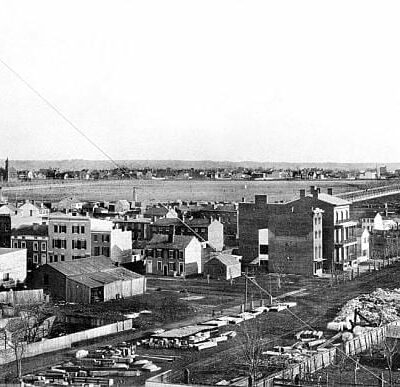Many of you are probably shocked to hear that there was a traffic circle at 16th and U St. The intersection is already a nightmare, with New Hampshire crossing at a diagonal. If you cross as a pedestrian, you are at least 35% likely to be hit by a car screaming down 16th St., only to veer down New Hampshire at the last second.

Well, technically, there never was a circle at 16th and U St., however in the late 19th century, there was a proposal and project to build one. Fortunately for us, it never was completed.
Washington in the late 1890s, was in full-on expansion mode. The grand boulevards were extending into the suburbs and L’Enfant’s vision of a city marked with circles was beginning to take greater shape.
One such circle was to be build at the intersection of Massachusetts Ave. and R St. NW. A letter was sent to the District Commissioners by General Duncan S. Walker in 1888, strongly encouraging them to name the new circle after the late Union General Winfield Scott Hancock.
In testimony of the honor in which his name is held, a residence at the corner of R and Twenty-first street, but a short distance in a direct line from the proposed circle, has been presented to Gen. Hancock’s widow. And I am assured by comrades of the General that in case a suitable square in the city shall be named for him an appropriate statue will be provided for its embellishment. In this connection I would further suggest the enlargement of the proposed circle, which could be done at this time with but comparatively small cost and add much to the beauty of the city.
So, this is how you get a circle named after you. Well, actually you don’t. The city named this one Sheridan Circle after the Union General Philip Sheridan. Sorry Winfield, try again.

This time, the plan was for a new circle at 16th and U streets. And, the Commissioners agreed to name it Hancock Circle. Below is the report from the Washington Post on December 1st, 1888, detailing the early plan.
The Commissioners are desirous of placing a circle at the junction of New Hampshire avenue, Sixteenth and U streets, to be known as Hancock Circle, and they have sent a plan for the improvement of the same to Chairman Clements, of the Sub-Committee of the House District Committee. Wm. E. Curtis wrote the Commissioners some time ago, suggesting that an appropriation of $5,000 be secured for this purpose. Capt. Thomas W. Symous, in charge of street improvements, approved the suggestion, saying that it would be a decided addition to the beauty-spots of the city, and recommended that the necessary steps be taken to secure the improvement The society of the Army of the Potomac has already taken steps to raise funds to erect a handsome statue of the late Gen. Hancock on the circle.
Awesome, I love it when a plan comes together! The District Commissioners authorized the condemnation of a section of land at the intersection to provide enough room for a circle about 90 feet in diameter.
Fast forward to 1894, and the circle still hasn’t been constructed. The 50th Congress authorized the acquisition of land through condemnation in squares 175, 176, 177, 189 and 190, however no public expense was to be permitted in taking over the land.
That makes it complicated because a number of the neighboring property owners protested strongly. To make matters worse, streetcar tracks had been placed right through the intersection, going up 16th St. So, the circle that had taken shape at the intersection, wasn’t much of a real traffic circle, the way Dupont Circle (Pacific Circle) and Logan Circle (Iowa Circle) were. The “circle” at the major intersection was small, chaotic and dangerous to cross.
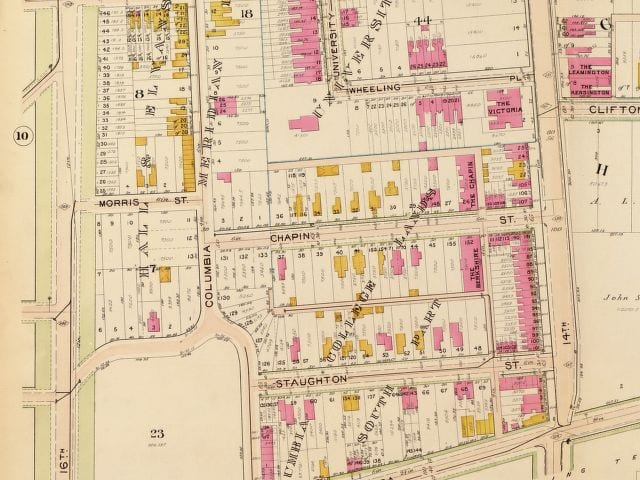
The solution was an appropriation bill by the sitting 52nd Congress that the circle “be and the same is hereby transferred to and located at or near the intersection of Sixteenth street extended and Morris street.” If you’re wondering where Morris St. is, it no longer exists. It was just up the 16th St. hill on the east side, where Meridian Hill Park sits today.
But, that was really kicking the can down the road (or up the hill). You can’t build a traffic circle on a hill. Sorry Hancock, no circle in Washington for you.

That was pretty much the death of a real Hancock Circle, even though some in the community supported it.
Below is a letter to the editor by Mary F. Henderson (i.e., Mary Foote Henderson, the woman pretty much responsible for all the grand development up 16th St.). This was published in the Washington Post on May 1st, 1896. By the way, she obviously had vested interest in improving the appeal of the neighborhood, given that her castle was about 150 yards away from the proposed circle.
Editor Post: The Hancock Circle, first losing its statue, then cut into two semi-circles by the Chevy Chase cars running through it, then legislated out of existence through efforts made by an owner of an adjoining lot, who grieved over his loss of parking in the making of the circle, has gone through a series of bitter misfortunes.
But the little circle situated at the intersection of two of the most beautiful avenues in town, and the only place left in the town limits without adornment, where three streets cross each other, could not and should not die without a struggle.
At a conference of residents living near its site, much surprise was expressed that a circle so beautifully situated and the making of it all paid for, could be so easily thrown away; not only thrown away, but abandoned at the cost of $2,500, which was appropriated last year for its removal. At first much disappointment was felt at the loss of the Hancock statue, then we, although considering that the Hancock Circle as no mean place for any statue, were still pleased to have Pennsylvania avenue decorated to any extent. Pennsylvania avenue is the first fine street seen by strangers at their entrance to the Capitol City, and our portals cannot be too effective. Again, it is well remembered that equestrian statues, not always perfect in design, are no novelty in town, and, perhaps, our little circle could be even more interesting by a change of ornamentation.
…
The citizens of Sixteenth street feel that not only should there be a circle at the intersection of every three streets on Sixteenth street, but at similar intersections on every other street within the District line. These circles are not obstructions, but a feature of Washington, which add especially to its beauty.
Washington streets are not race tracks nor thoroughfares for traffic, and we all agree that our circles, with their various ornamentations of statues, flower beds, and other artistic landscape features, are preferable to the strictly rectangular lines. Indeed they mark the contrast between Washington and other American cities. Who will come to the rescue?
Another interesting letter to the editor by Francis E. Leupp was published on May 11th, 1896. This one had a very interesting proposal, incorporating another famous Union general.
Editor Post: The interesting communications which have appeared in your columns suggesting possible improvements of the circle at the junction of Sixteenth street, U street, and New Hampshire avenue, move me to contribute my mite to the discussion. I have long wondered why, with its multitude of statues and its noble Washington Monument, this city has never used the form of the arch for memorial purposes. This omission is as striking in its way as the failure thus far to honor suitably the memory of Gen. Grant in the Capital City of the republic he served so well. Why not correct both errors at once? A stone arch thrown across the reservation prematurely named Hancock Circle, surmounted with an equestrian statue, or bearing above its key a fine relief profile of Grant, and inscribed with his best-remembered phrase, “Let us have peace,” would be a fitting tribute most appropriately placed. …
It seems to me, moreover, that the arch would solve difficulty which has troubled many minds. The U street railway has its tracks already running through the circle from east to west. It would not be necessary to remove these. The underground trolley has no unsightly attachments above the surface of the street, and the tracks offer no obstruction to carriage driving. The arch could be made like the Arc de Triomphe in Paris, open on all four sides, and the cars could pass through it east and west as easily as carriages could drive through it north and south.
An interesting proposal indeed, but also not one that came to fruition. Though. Grant did get a traffic circle up in Petworth.
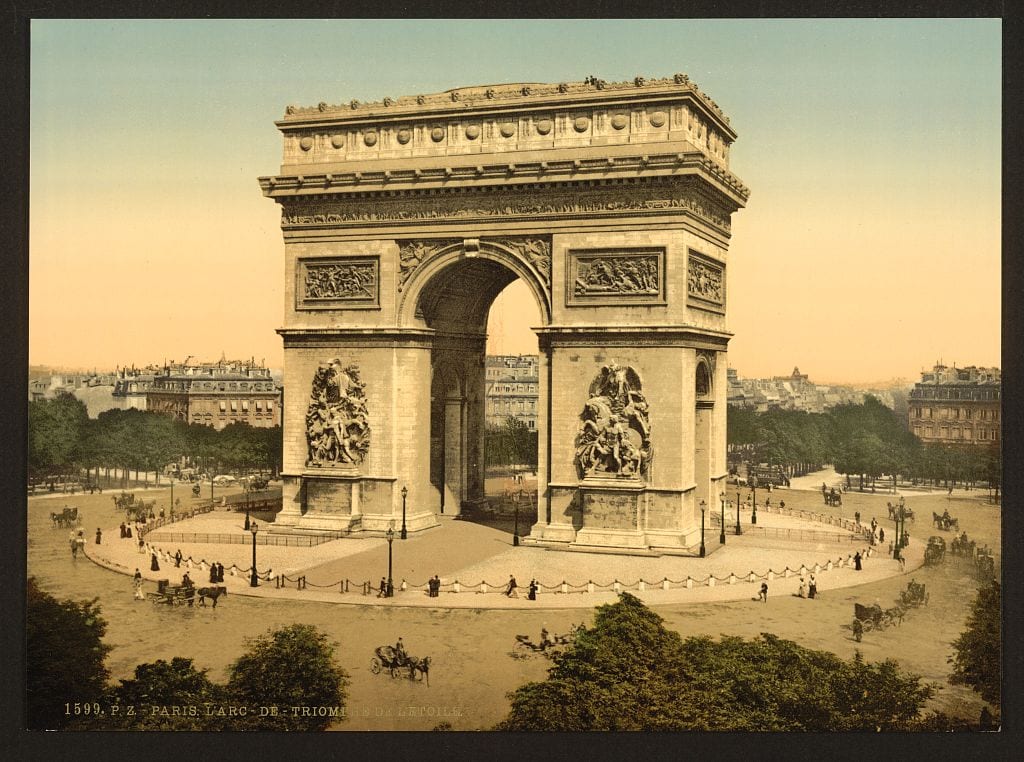
Unfortunately, the man for whom it was to be named, Winfield Scott Hancock, never received his circle. They did create a statue of him on his horse, which was to be situated at the center of the circle. That statue now sits at 7th and Pennsylvania Ave., right next to the Naval Archives Metro stop.
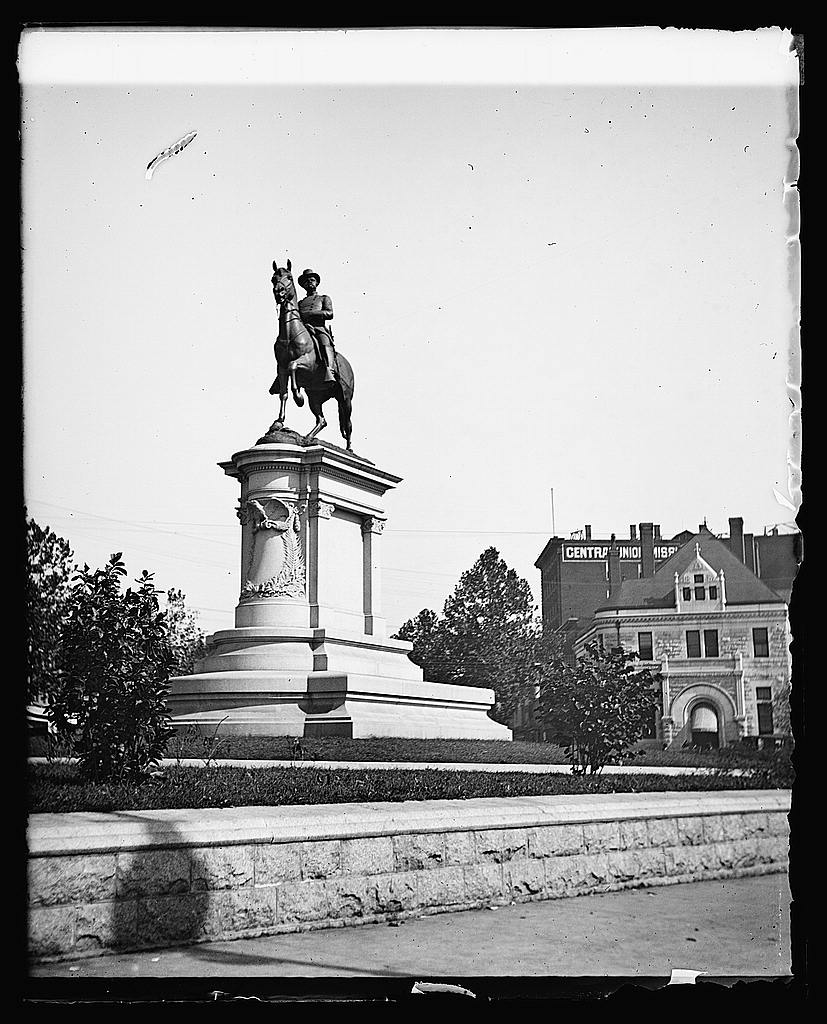
Now that’s some interesting trivia for you to share with your friends. This post was inspired by one about the “non-circles of Washington,” way back in 2010. You can find it on one of our favorite blogs, Greater Greater Washington.
